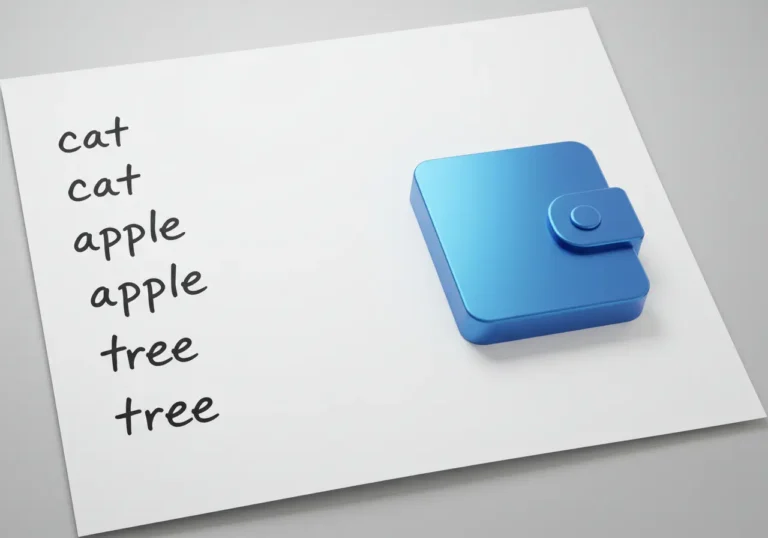How to Set Up a Multi-Signature (Multisig) Wallet for Shared Funds
Introduction: Why Shared Money Needs Extra Care
Imagine this: you and your closest friends decide to save money together for a dream trip. Everyone puts in a bit each month. Now picture one person holding all the funds in their single wallet. It feels risky, right? If that wallet gets hacked, or if the person loses access, everyone’s savings could vanish.
That’s where a Multisig wallet comes into play. It’s like having a group safe where more than one person needs to turn their key before the box opens. It sounds technical at first, but trust me—it’s not as complicated as it seems. Think of it as a smart way to make sure no single mistake or bad decision can wipe out all the shared money.
In the next sections, I’ll explain step by step how setting up a multi-signature wallet works, why it’s useful, and how you can actually do it yourself.
What Exactly Is a Multi-Signature Wallet?

A multisig wallet is a type of digital wallet that requires more than one person to approve a transaction. In a normal wallet, only one password or private key is needed. But with a multisig wallet, you can set it up so that two out of three, or three out of five people, need to give the green light before money moves.
Here’s a simple example:
- Imagine a small bakery run by three siblings. They put their earnings into a shared digital wallet. To avoid one sibling taking money without the others knowing, they set a rule: at least two of them must agree before money can be withdrawn. That’s multisig in action.
This extra layer of protection is one of the best shared funds security measures you can take.
Why Use a Multisig Wallet for Shared Funds?
When we talk about shared funds protection methods, the idea is simple: reduce the risks that come with relying on one person.
- More accountability: No single person controls the money alone.
- Better security: Even if one private key is stolen, hackers still need others.
- Peace of mind: Everyone knows decisions are made together, not behind closed doors.
- Transparency: Every transaction is visible to the group.
It’s like putting locks on a shared gate where at least two people need to unlock it at the same time.
The Basics of the Multisig Wallet Setup Process

Let’s break down how it usually works.
- Choose your wallet provider
Some popular wallets like Electrum, Sparrow, and hardware wallets such as Ledger support multisig. - Decide on the signing rule
You might hear terms like “2-of-3” or “3-of-5.” That just means how many people must sign a transaction out of the total.- 2-of-3: Three people hold keys, but only two are required to move money.
- 3-of-5: Five hold keys, but three are required.
- Create and share public keys
Each participant generates their own key pair. The public keys are combined to create the multisig wallet. - Distribute private keys securely
Each participant keeps their private key safe—never share it. - Test a small transaction
Before moving large amounts, always send a small test to make sure everything is working.
That’s the multi-signature wallet configuration guide in a nutshell.
Step-by-Step: Multi-Signature Wallet Setup Tutorial

Now let’s go deeper and walk through an example as if you’re setting it up with friends.
Step 1: Pick Your Wallet Software
Suppose you choose Electrum, a well-known Bitcoin wallet that supports multisig. Each friend installs the app on their computer or phone.
Step 2: Generate Keys
Each of you creates a wallet and notes down your recovery seed (the list of words you get at the start). These seeds must be kept safe—like writing them on paper and storing them in different places.
Step 3: Share Public Keys Only
Now you exchange public keys with each other (never private ones). You enter them into the wallet app to create the shared multisig account.
Step 4: Define the Signing Rule
You decide on a 2-of-3 rule. That means if you, Maria, and Carlos are sharing funds, at least two people must sign off for any transaction.
Step 5: Fund the Wallet
You add a small amount of crypto to the shared wallet. This is the testing phase.
Step 6: Test Transactions
You and Maria try to send funds. The app requires both of you to approve before the money moves. Success!
From now on, you’ve got a system for secure shared funds storage.
Best Practices: Keeping Your Multisig Wallet Safe
Even with this smart system, you still need to follow multisig wallet best practices:
- Spread the keys wisely: Don’t store all private keys in one place or with one person.
- Back up recovery phrases: Each participant must store their seed phrase offline and safely.
- Avoid weak devices: Don’t keep keys on old, virus-prone computers.
- Practice transparency: Agree on group rules before starting, like when to withdraw and how much.
- Use hardware wallets if possible: They add an extra wall against hacks.
These steps make sure your multi-signature wallet security features actually work in real life.
Shared Funds Management Strategies
A multisig wallet is powerful, but it works best when combined with clear group strategies.
- Set limits: Maybe decide no transaction above $500 happens without everyone’s agreement.
- Create an emergency plan: What happens if one person loses their key? With a 2-of-3 setup, you can still access funds with the remaining two.
- Keep communication open: A WhatsApp or Signal group dedicated to wallet updates helps avoid confusion.
This way, you’re not just building security—you’re building trust.
Multi-Signature Wallet in Real Life
It’s not just small groups using this. Businesses, charities, and even large crypto exchanges use multi-signature wallet setup for protection.
- Startups: Founders use multisig to manage company funds.
- Families: Parents and kids share savings safely.
- Community groups: Clubs or associations pool money without worrying one member will misuse it.
It’s a system that scales from a handful of friends to big organizations.
The Human Side: Why It Matters
Money is emotional. When it’s shared money, it carries even more weight. Nobody wants to be blamed if something goes wrong. A multisig wallet doesn’t just protect coins—it protects friendships, business partnerships, and trust itself.
Setting up a system like this tells everyone: we value fairness, security, and shared responsibility.
Conclusion: Taking the First Step
If you’ve ever worried about putting shared funds in one person’s hands, it’s time to rethink. A Multisig wallet gives you a way to share responsibility while keeping money safe. It’s not just a technical setup—it’s peace of mind.
Start small, test it, and you’ll see how empowering it feels to know your group’s money has extra protection.
Key Takeaways (Quick List)
- A multisig wallet is like a group safe that needs more than one key to open.
- It prevents one person from having full control of shared funds.
- You can set rules like 2-of-3 or 3-of-5 signers needed.
- The multisig wallet setup process includes choosing software, generating keys, and defining rules.
- Best practices include spreading keys, backing up recovery phrases, and using hardware wallets.
- It’s useful for families, friends, businesses, and communities alike.

Hello, I’m Edmilson Dias, founder of CoinBringer. I created this platform to guide people through the fast-moving world of cryptocurrency with clarity and safety. With years of research in blockchain and digital security, my goal is to translate complex topics into practical knowledge, offering reliable tutorials, safety insights, and guidance for both newcomers and experienced users.
Discover more from CoinBringer
Subscribe to get the latest posts sent to your email.







